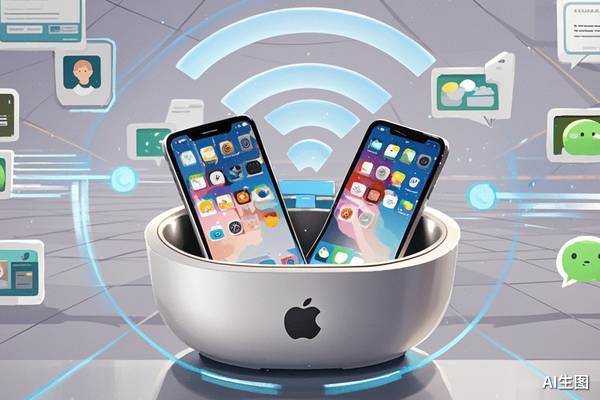The Viral iPhone Data Transfer Dilemma
Artist William Chan recently sparked widespread discussion when he complained that transferring data between old and new iPhones "takes a whole day." His remarks resonated with many users, with one netizen reporting: "It took me three days to change to an iPhone, and data transfer alone took two and a half days."
The Rice Cooker Liner "Folk Remedy"
Amid these frustrations, a surprising "folk remedy" gained traction on social media platforms. Many users claimed that placing both phones inside a rice cooker liner could significantly improve data transfer speeds.
Social media bloggers explained the supposed science behind this method: routers, Bluetooth devices, and operator base stations in the environment can interfere with Wi-Fi connections. Placing phones in a rice cooker liner creates a simple "shielding box" that isolates external signal interference, while the arc-shaped liner supposedly concentrates Wi-Fi signal reflection.
Apple's Official Response
When consulted about this viral hack, Apple's official customer service provided a definitive response: "It's really unnecessary to use a rice cooker liner for data transfer between iPhones."
The customer service representative explained the technical reality: iPhone data transfer uses a virtual network and doesn't involve Wi-Fi or Bluetooth transmission. "It can be understood as the old iPhone creating a hotspot and connecting to the new one for data transfer. It's a point-to-point transfer without the process of sending a signal to the server and then getting it back. This data migration is not affected by any other interference, so there's no need to limit it to a liner or other enclosed environments."
Regarding users who reported speed improvements with the liner method, Apple suggested this was likely coincidence or due to the phones being in an "idle" state without interruptions, allowing them to "concentrate" on data transfer.
The WeChat Factor
Many users identified WeChat as the primary culprit for lengthy transfer times, with some chat records consuming dozens of gigabytes. The question remained: could the rice cooker liner method accelerate WeChat transfers, which do use Wi-Fi?
Tencent's customer service clarified that when transferring WeChat data between phones, there's no need for proximity or enclosed environments. "As long as both phones have sufficient power and are connected to the same stable Wi-Fi network, with the network remaining unobstructed and no network switching or app closing, the message synchronization speed won't be affected."
Practical Solutions for Faster Transfers
For users seeking to accelerate data migration, both companies offered practical advice:
- Clear phone cache and update WeChat versions
- Keep both devices active and undisturbed
- For memory-heavy apps like WeChat and photo albums, consider third-party software compatible with both iOS and Android systems
- Some third-party tools can transfer pictures, chat records, and contacts separately via Bluetooth, potentially faster than Apple's built-in function
For those preferring Apple's native transfer function, customer service recommended conducting transfers overnight while sleeping, ensuring uninterrupted operation and ready-to-use devices by morning.







Comments
Join Our Community
Sign up to share your thoughts, engage with others, and become part of our growing community.
No comments yet
Be the first to share your thoughts and start the conversation!